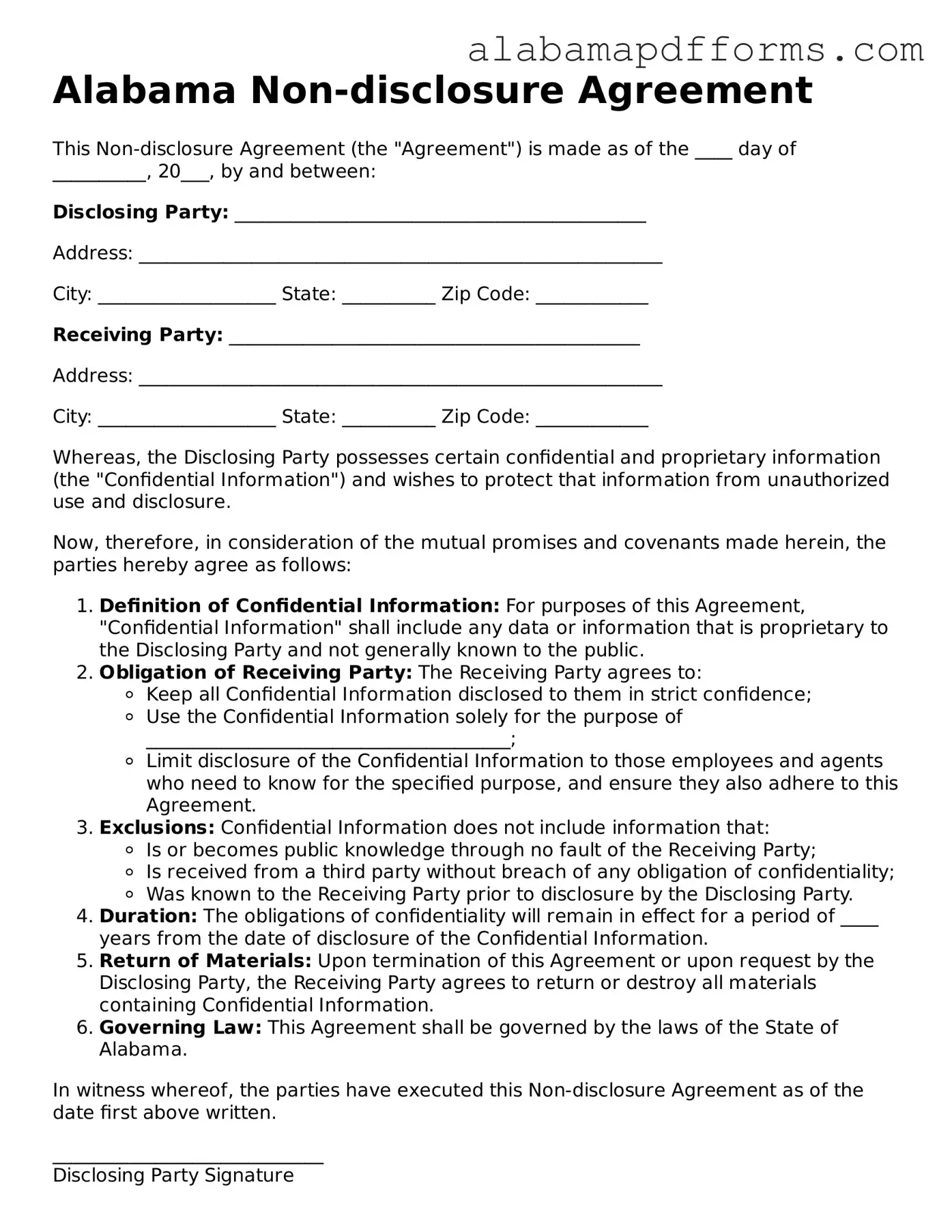Alabama Non-disclosure Agreement
This Non-disclosure Agreement (the "Agreement") is made as of the ____ day of __________, 20___, by and between:
Disclosing Party: ____________________________________________
Address: ________________________________________________________
City: ___________________ State: __________ Zip Code: ____________
Receiving Party: ____________________________________________
Address: ________________________________________________________
City: ___________________ State: __________ Zip Code: ____________
Whereas, the Disclosing Party possesses certain confidential and proprietary information (the "Confidential Information") and wishes to protect that information from unauthorized use and disclosure.
Now, therefore, in consideration of the mutual promises and covenants made herein, the parties hereby agree as follows:
- Definition of Confidential Information: For purposes of this Agreement, "Confidential Information" shall include any data or information that is proprietary to the Disclosing Party and not generally known to the public.
- Obligation of Receiving Party: The Receiving Party agrees to:
- Keep all Confidential Information disclosed to them in strict confidence;
- Use the Confidential Information solely for the purpose of _______________________________________;
- Limit disclosure of the Confidential Information to those employees and agents who need to know for the specified purpose, and ensure they also adhere to this Agreement.
- Exclusions: Confidential Information does not include information that:
- Is or becomes public knowledge through no fault of the Receiving Party;
- Is received from a third party without breach of any obligation of confidentiality;
- Was known to the Receiving Party prior to disclosure by the Disclosing Party.
- Duration: The obligations of confidentiality will remain in effect for a period of ____ years from the date of disclosure of the Confidential Information.
- Return of Materials: Upon termination of this Agreement or upon request by the Disclosing Party, the Receiving Party agrees to return or destroy all materials containing Confidential Information.
- Governing Law: This Agreement shall be governed by the laws of the State of Alabama.
In witness whereof, the parties have executed this Non-disclosure Agreement as of the date first above written.
_____________________________
Disclosing Party Signature
_____________________________
Receiving Party Signature
Date: ______________________
